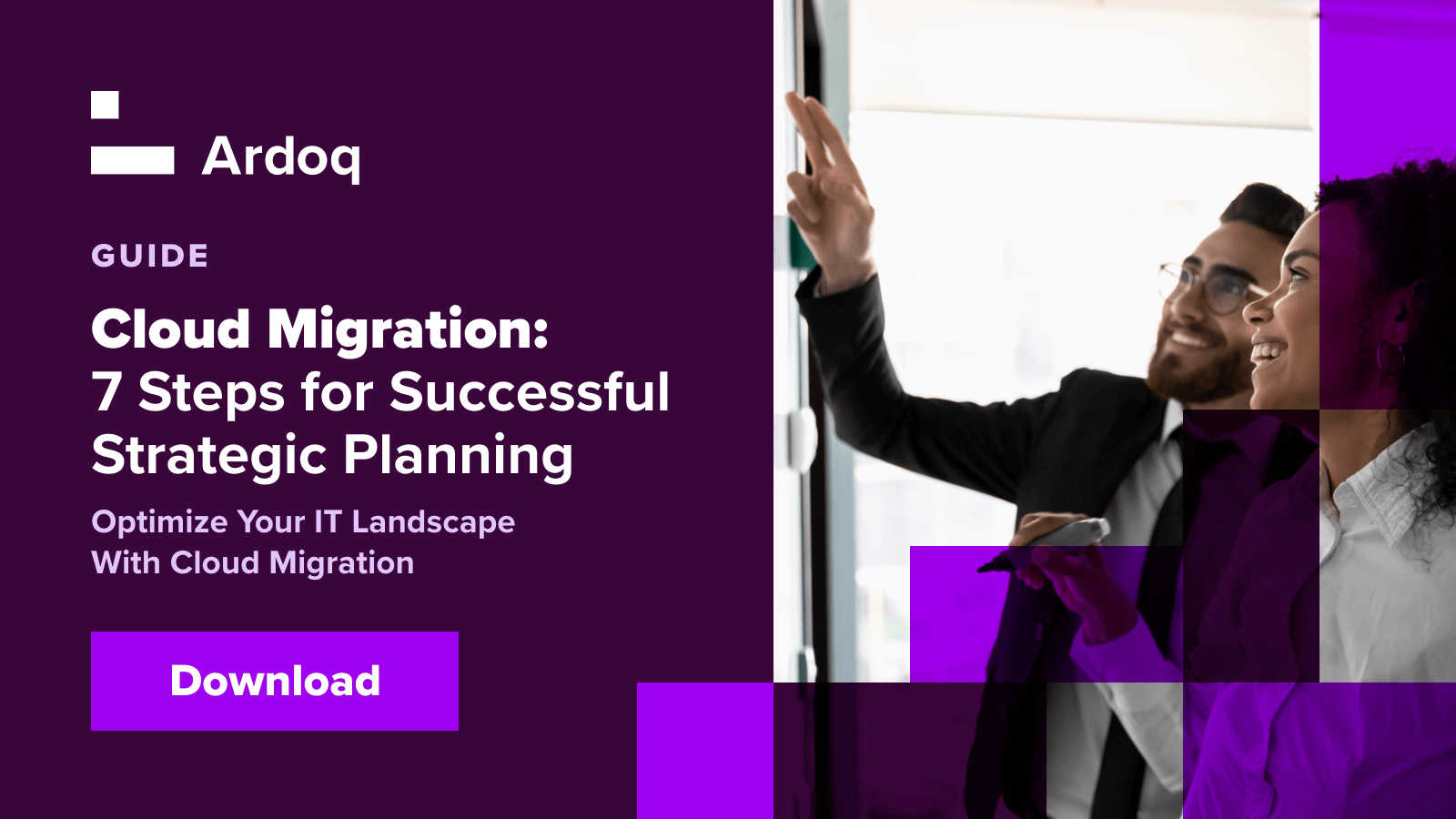When migrating applications to the cloud, you move the company’s digital assets, services, databases, and applications partially or wholly to the cloud. It’s a big project with significant consequences. Without a clear strategy, this project could be costly and painful. With cloud migration often being an extensive, large-scale project, these bi-directional movements have the potential to severely exhaust a company’s resources and ability to adapt to external challenges.
Whatever your starting point is, what your motivations are, or how your project team is structured, exclusively sticking to on-premise solutions isn’t cutting it. Business needs are changing, and budgets change all the time. Security requirements are changing. And your cloud migration strategy should tackle all of these challenges head-on.
What Cloud Migration Challenges Are Organizations Facing?
All organizations have been in situations where budgets change or timelines are adjusted on a whim. However frustrating that is, you need to make sure you are ready for external factors and pressures. Here are some of the most commonly reported cloud migration challenges that pop up in organizations:
1. Ensuring High Levels of Data Security
Security is a substantial cloud migration risk, but organizations lack confidence in their ability to address security risks.
What defines a risk? It could be one or more of the following:
- Applications not able to meet demand
- Excessive downtime
- Failing during peak demand
While cloud migration can reduce IT risk by streamlining the overall application portfolio and improving service reliability, it also introduces new concerns such as the security of sensitive data.
Organizations must ensure that their data is protected during the migration process and when it's stored in the cloud. They must also comply with various regulatory requirements, such as HIPAA, GDPR, and PCI DSS, or else risk hefty penalties for non-compliance.
This makes data protection a crucial concern during cloud migration. Here are some ways to ensure your data is protected during the cloud migration process:
- Use encryption: It is essential to ensure that your data is encrypted before it's moved to the cloud by using encryption protocols, such as SSL/TLS or IPsec, to encrypt your data during transit.
- Choose a secure cloud provider: Ensure that your provider has robust security measures, such as firewalls, intrusion detection and prevention systems, and data encryption. They should also be compliant with the latest relevant security standards and regulations.
- Implement access controls: This ensures that only authorized personnel can access your data during the migration process. This can include role-based access controls, multi-factor authentication, and minimal privilege access.
- Backup your data: It sounds simple, but it can be easy to forget exactly for that reason: always back up your data before migrating it to the cloud. This ensures that your data is protected in case of accidental deletion, data corruption, or other potential data loss incidents.
- Test your migration process: Before migrating data, conduct a test migration to ensure that your data is fully secured throughout the process. This can include testing data transfer speeds, data integrity checks, and error handling.
- Monitor your data: Once your data is in the cloud, monitor it to ensure that it's secure. This can include monitoring access logs, activity logs, and other security metrics.
Taking these steps ensures that data is protected during the cloud migration process. You may also ultimately decide that the risk of moving an application to the cloud just isn’t worth the potential savings or efficiencies. Many organizations continue to keep some applications on-premise for security reasons, leading to a hybrid cloud solution.
2. Facing Unexpected or Increased Costs
What is it you plan to save–or spend? According to NetApp, dynamic cloud environments mean costs can fluctuate as an organization adopts new services and application usage grows. Further, Fortinet found that 74% of companies have repatriated apps after failing to achieve anticipated returns, and Gartner estimates as much as 70% of cloud costs are wasted, which could have been avoided with more strategic planning.
Cloud migration can involve significant upfront costs, such as the cost of purchasing and configuring cloud infrastructure and tools. Additionally, organizations must manage ongoing costs associated with cloud services, such as computing and storage usage. Without proper cost management, cloud migration can end up being more expensive than on-premises infrastructure.
While cloud migration can be an expensive undertaking for many organizations, there are several strategies that organizations can use to make cloud migration more cost-effective:
- Optimize resource utilization: One of the most significant benefits of cloud computing is the ability to pay only for what you use. To save costs, organizations should optimize their resource utilization in the cloud environment, ensuring that they're only using the resources they need. This can be achieved through tools such as auto-scaling, which automatically adjusts resource usage based on demand.
- Choose the right pricing model: Cloud service providers offer a variety of pricing models, including pay-as-you-go, reserved instances, and spot instances. By choosing the right pricing model for your workload, you can save costs. For example, reserved instances can offer significant cost savings for workloads with predictable usage patterns.
- Use cloud cost management tools: Cloud cost management tools can help you monitor and control your cloud spend. These tools provide visibility into your cloud usage and costs, allowing you to identify areas where you can reduce costs. Examples of cloud cost management tools include AWS Cost Explorer and Azure Cost Management.
- Optimize data transfer costs: Cloud service providers charge for data transfer between different regions or data centers. To save costs, organizations should optimize their data transfer patterns, minimizing the amount of data transfer required between different regions or data centers.
- Consider a hybrid cloud approach: A hybrid cloud approach allows organizations to use a combination of on-premises and cloud infrastructure. By keeping some workloads on-premises, organizations can avoid the cost of moving all workloads to the cloud. Additionally, a hybrid approach can provide greater flexibility and control over the infrastructure used by the organization.
3. Forgetting About Continuation
Longer-term challenges will quickly come to light if migration isn’t seen as a continuous project. Migration isn’t supposed to be a one-off project, but a part of an overall IT strategy that is tightly aligned with the business.
If revisiting applications, hardware maintenance, or software maintenance isn’t prioritized, companies quickly lose an overview of what new technologies are being adopted, who uses them, and the impact that changing even one application will have across the business.
Gartner predicts that by 2025, 85% of enterprises will have a cloud-first strategy. Drivers are IT costs, flexibility, and efficiency. Ongoing maintenance is essential to ensure that the cloud environment remains secure and optimized for your workloads. Here are some reasons why maintenance is important in cloud migration:
- Security: Cloud environments are vulnerable to cyber threats, and maintaining the security of your cloud environment is critical. Regular maintenance activities such as software updates, patching, and vulnerability scanning can help protect your data and workloads from cyber threats.
- Performance optimization: As your workload and data requirements change, your cloud environment must be optimized to maintain performance. Ongoing maintenance activities such as performance monitoring, capacity planning, and load balancing can help ensure that your workloads are running efficiently.
- Cost optimization: Cloud services can be expensive, and ongoing maintenance activities such as resource optimization, right-sizing, and cost tracking can help reduce cloud costs. By regularly reviewing and optimizing your cloud environment, you can ensure that you're only using the resources you need and not overspending on unnecessary services.
- Compliance: Compliance requirements, such as GDPR, HIPAA, and PCI DSS, must be maintained when using cloud services. Ongoing maintenance activities such as access control management, audit logging, and encryption can help ensure that your cloud environment remains compliant.
- Disaster recovery: Cloud environments are susceptible to disruptions, such as natural disasters or infrastructure failures. Maintaining a disaster recovery plan that includes regular testing and maintenance activities can help ensure that your data and workloads are protected in the event of a disaster.
Cloud Migration Is a Journey, Not a Destination
Cloud migration is a complex process that requires a well-thought-out strategy to avoid costly mistakes. While many companies have already moved their applications to the cloud, the high percentage of bi-directional movements highlights the importance of careful evaluation. In today's rapidly changing business landscape, a dependable cloud migration strategy is crucial to remain competitive and adaptable to evolving needs and requirements. Cloud Migration challenges can be avoided with the right strategy and planning.
The key to successful cloud migration is a thorough, strategic plan. Read our 7 Steps for Successful Strategic Planning to gain the upper hand in your cloud migration project:
 Leah Plotz
With over ten years of experience working in content, Leah wants to make sure Ardoq empowers engagement and collaboration throughout an organization.
Leah Plotz
With over ten years of experience working in content, Leah wants to make sure Ardoq empowers engagement and collaboration throughout an organization.








